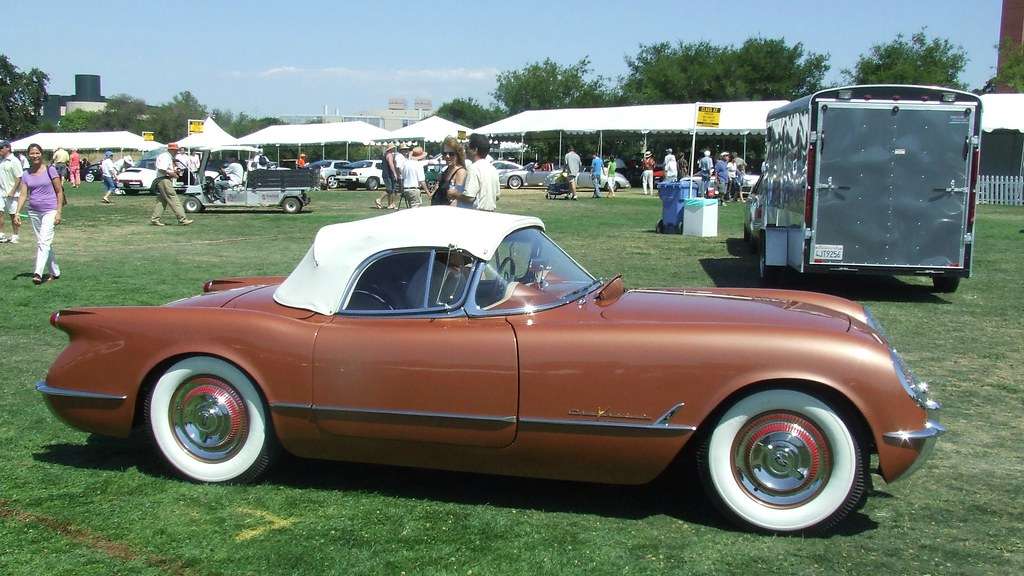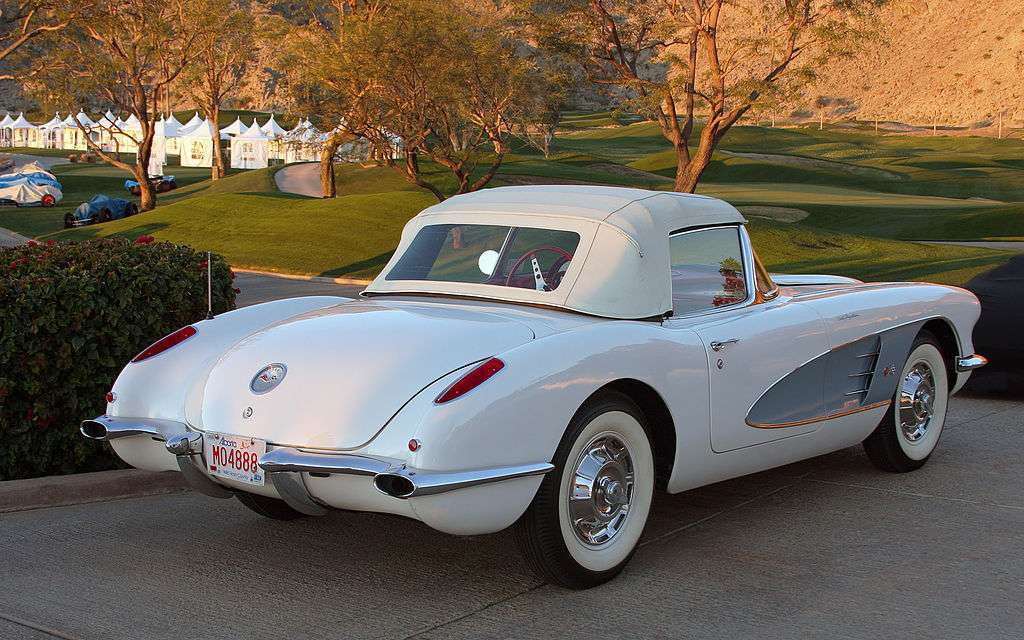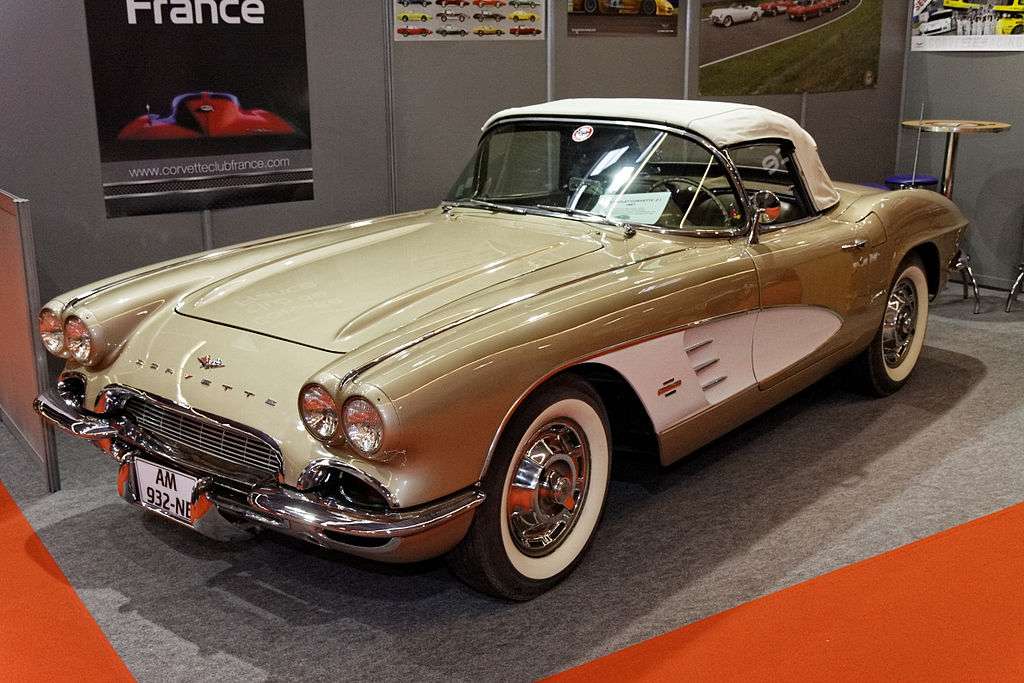CLASSIC CARS OF YESTERYEAR: From near demise to American classic
The Chevrolet Corvette (C1) was the first generation of the Corvette sports car produced by Chevrolet. It was introduced late in the 1953 model year and produced through 1962. This generation is commonly referred to as the “solid-axle” generation, as the independent rear suspension did not appear until the 1963 Stingray.
The Corvette was rushed into production for its debut model year to capitalize on the enthusiastic public reaction to the concept vehicle, but expectations for the new model were largely unfulfilled. Reviews were mixed and sales fell far short of expectations through the car’s early years. The program was nearly canceled, but Chevrolet decided to make necessary improvements.
The secretive effort was code-named “Project Opel” (after GM’s German division Opel). The result was the hand-built, EX-122 pre-production Corvette prototype, which was first shown to the public at the 1953 General Motors Motorama at the Waldorf-Astoria, in New York City, on January 17, 1953. When production began six months later, at an MSRP of $3,513 ($35,580 in 2021 dollars), it had evolved into a considerably costlier car than the basic $2,000 roadster Harley Earl originally had in mind.
To keep costs down, GM executive Robert F. McLean mandated off-the-shelf mechanical components. The new car used the chassis and suspension design from the 1949 through 1954 Chevrolet passenger vehicles. The engine was a 235 cu. in. (3.85 L) inline six engine that was similar to the engine that powered all other Chevrolet car models, but with a higher-compression ratio. Output was 150 hp . Because there was currently no manual transmission available to Chevrolet rated to handle 150 HP, a two-speed Powerglide automatic was used. The 0–60 mph time was 11.5 seconds.
Three body variants were created. The roadster was built as the Corvette, the Corvair fastback variant never went into production, and the two-door Nomad station wagon was eventually built as the Chevrolet Nomad.
During the last half of 1953, 300 Corvettes were to a large degree, hand-built on a makeshift assembly line that was installed in an old truck plant in Flint, Michigan, while a factory was being prepped for a full-scale 1954 production run. The outer body was made out of then-revolutionary glass fiber reinforced plastic material. Although steel shortages or quotas are sometimes mentioned as a factor in the decision to use fiberglass, no evidence exists to support this.
Some doubt was expressed that they should build the 1954 model of steel. People seemed to be captivated by the idea of the fiberglass plastic body. Furthermore, information being given by the reinforced plastic industry seemed to indicate the practicality of fabricating plastic body parts for automobiles on a large scale.
With many improvements to the engine and drive train, sales continued to decline. The Chevrolet division was GM’s entry-level marque. Managers at GM were seriously considering shelving the project, leaving the Corvette to be little more than a footnote in automotive history, and would have done so if not for three important events. The first was the 1955 introduction of Chevrolet’s first V8 engine since 1919. Late in the model year, the new 195 hp, 265 small-block became available with a Powerglide automatic transmission, until the middle of the production year when a manual 3-speed became available, coupled to a 3.55:1 axle ratio, the only one offered. This helped the “rather anemic Corvette into a credible if not outstanding performer”. The second was the influence of a Russian émigré in GM’s engineering department, Zora Arkus-Duntov. The third factor in the Corvette’s survival was Ford’s introduction of the 1955 two-seat Thunderbird, which was billed as a “personal luxury car”, not a sports car. Even so, the Ford-Chevrolet rivalry in those days demanded GM not appear to back down from the challenge.
The original concept for the Corvette emblem incorporated an American flag into the design, but was changed well before production since associating the flag with a product was frowned upon.
The 1953 model year was not only the Corvette’s first production year, but at 300 produced it was also the lowest-volume Corvette. The cars were essentially hand-built and techniques evolved during the production cycle so that each 1953 Corvette is slightly different. All 1953 models had red interiors, Polo white exteriors, and painted blue engines (a reference to the three colors represented on the Flag of the United States, where the Corvette was assembled), as well as black canvas soft tops.
The quality of the fiberglass body as well as its fit and finish were lacking. Other problems, such as water leaks and doors that could open while the car was driven, were reported with the most severe errors corrected in subsequent units produced, but some shortcomings continued beyond the Corvette’s inaugural year. By December 1953, Chevrolet had a newly-equipped factory in St. Louis ready to build 10,000 Corvettes annually. However, negative customer reactions to 1953 and early 1954 models caused sales to fall short of expectations.
In 1954, a total of 3,640 of this model were built and nearly a third were unsold at year’s end. Chevrolet debuted its 265 cu. in. (4.3 L) small-block, 195 hp V8 in 1955 and the engine was available for the Corvette. Early production 1955 V8 Corvettes continued with the mandatory-option Powerglide automatic transmission (as did the few 6-cylinder models built). A new three-speed manual transmission became available later in the year for V8 models, but was not popular with about 75 equipped with it. A total of 700 1955 Corvettes were built, making it second only to 1953 in scarcity. The “V” in the Corvette emblem was enlarged and gold colored, signifying the V8 engine and 12-volt electrical systems, while 6-cylinder models retained the 6-volt systems used in 1953-54.
Although not a part of the original Corvette project, Zora Arkus-Duntov was responsible for the addition of the V8 engine and three-speed manual transmission. Duntov improved the car’s marketing and image and helped the car compete with the new V8 – engined Ford Thunderbird, Studebaker Speedster and the larger Chrysler C-300, and turned the Corvette from its lackluster performance into a credible performer. In 1956 he became the director of high-performance vehicle design and development for Chevrolet helping him earn the nickname “Father of the Corvette.”
Although the C1 Corvette chassis and suspension design were derived from Chevrolet’s full-size cars, the same basic design was continued through the 1962 model even after the full-size cars were completely redesigned for the 1955 model year. This was due to the combined factors of the relatively high reengineering and retooling costs for this low-volume production vehicle, the continued potential for cancellation of the car, and the increased size and weight of the all-new suspension design for the full-size cars, which made it unsuitable for use in the lighter weight Corvette.
With a new larger engine the 1962 model year Corvette was the quickest to date. Displacement of the small-block V8 increased from 283 cu. in. (4.6 L) to 327 cu. in. (5,360 cc), which was rated at 250 hp in its base single 4-barrel carburetor version. Hydraulic valve lifters were used in the standard and optional 300 hp engines, solid lifters in the optional carbureted 340 hp and fuel-injected 360 hp versions. Dual 4-barrel carburetor engines were no longer available.
By 1962, it was the last solid-rear-axle suspension, that had been used from the beginning. Rocker panel trim was seen for the first time, and exposed headlights for the last, until 2005. This was the last Corvette model to offer an optional power convertible top mechanism.
Responsible journalism is hard work!
It is also expensive!
If you enjoy reading The Town Line and the good news we bring you each week, would you consider a donation to help us continue the work we’re doing?
The Town Line is a 501(c)(3) nonprofit private foundation, and all donations are tax deductible under the Internal Revenue Service code.
To help, please visit our online donation page or mail a check payable to The Town Line, PO Box 89, South China, ME 04358. Your contribution is appreciated!





Leave a Reply
Want to join the discussion?Feel free to contribute!